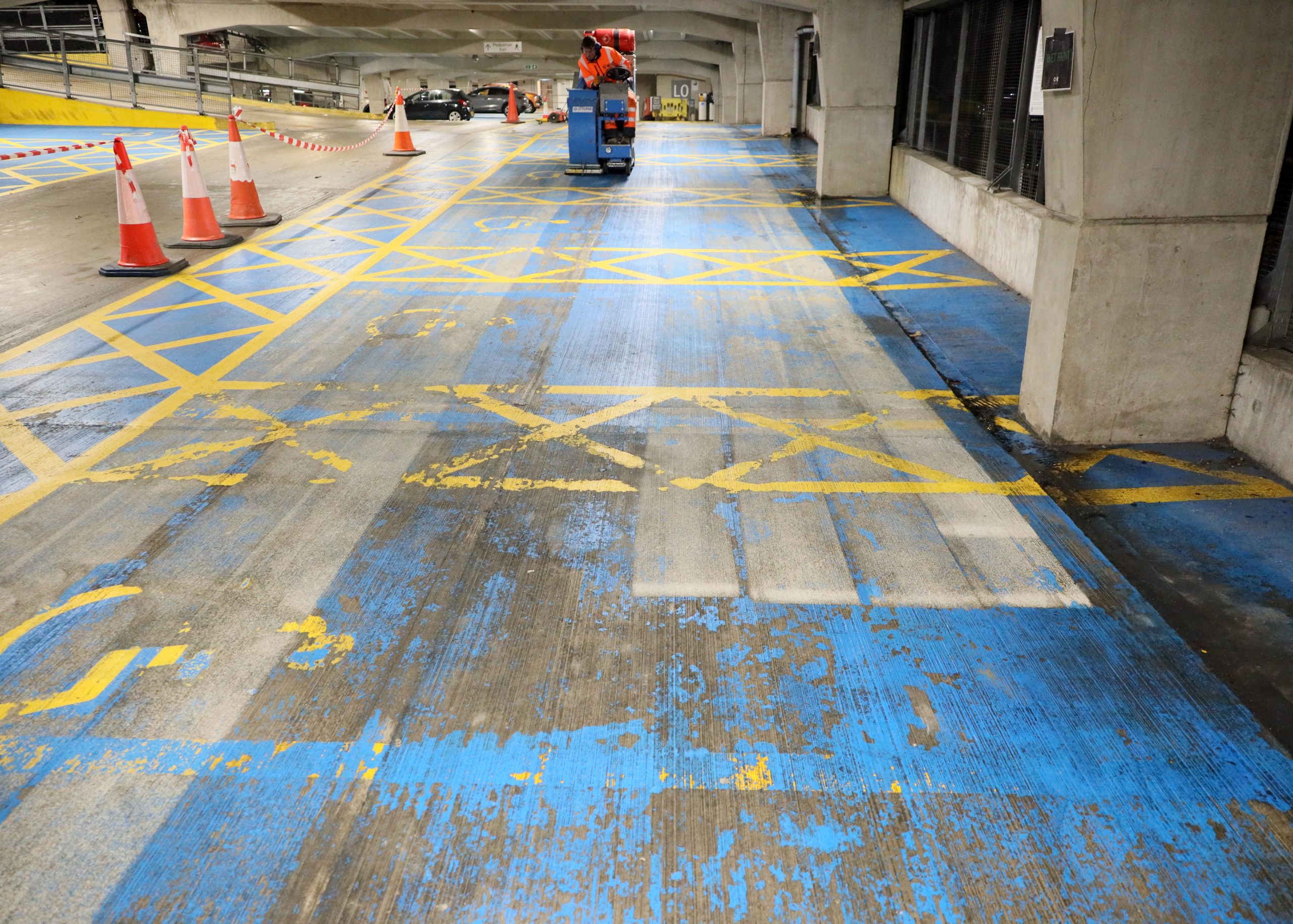What’s the Best Way to Remove Old or Faded Line Markings?

When markings start to fade, crack, or no longer fit your site layout, the next step is clear — they need to be removed before new ones go down.
But one question we’re often asked is:
👉 “What’s the best and safest way to remove old line markings?”
At C&R, we specialise in professional line marking removal and surface preparation, helping clients refresh, reconfigure, or upgrade their sites safely and efficiently
Why Proper Removal Matters.
Trying to paint over old markings might seem quicker, but it can cause real problems later.
Without proper removal, new coatings struggle to bond — leading to early failure, uneven finishes, or even confusion on-site.
Safe and complete removal ensures:
✅ A clean, stable surface for re-marking
✅ Better adhesion and longevity for new coatings
✅ Improved appearance and compliance
✅ Reduced trip and skid risks from surface residue
Common Line Marking Removal Methods.
At C&R, we use a range of techniques — selected based on your surface type, marking material, and site environment.
Shot Blasting.
This is one of the most effective and precise methods for large areas.
We use ride-on shot blasting machines (a first in the UK when introduced by C&R) to remove markings evenly and restore surface texture — all without damaging the substrate.
Best for: Concrete and asphalt surfaces, car parks, warehouses, and industrial floors.
Benefits: Fast, dust-controlled, and ideal for full-area resurfacing or re-marking.
Hydroblasting (High-Pressure Water Removal).
Using high-pressure water jets, this method removes markings and contaminants without abrasive contact — perfect for sensitive or decorative surfaces.
Best for: Public areas, decorative paving, transport hubs, and where dust-free work is essential.
Benefits: Environmentally friendly and surface-safe.
Mechanical Grinding or Planing.
For thick thermoplastic or epoxy markings, mechanical grinding may be required.
C&R’s technicians use precision equipment to remove markings smoothly while maintaining even surface levels.
Best for: Small, localised removals or heavily layered markings.
Benefits: Quick and effective for targeted repairs or layout changes.
When Should You Remove and Reapply Markings?.
You should consider removal and re-marking when:
-
Markings are faded or confusing for drivers or pedestrians.
-
Layouts change, such as new traffic routes, walkways, or EV bays.
-
Regulations or compliance requirements are updated.
-
You’re introducing new coatings or safety zones that require a clean base.
The C&R Approach.
Every removal project begins with a site assessment.
Our specialists determine the right method to balance performance, efficiency, and environmental care.
We provide:
-
Fully trained, accredited operators.
-
Dust-free and water-managed systems.
-
Waste containment and responsible disposal.
-
Fast turnaround with minimal site disruption.
Whether you need a small refresh or a complete site overhaul, we’ll ensure the surface is fully prepared and ready for new markings.
Conclusion.
Removing old or faded markings the right way ensures your new layout is clean, compliant, and long-lasting.
Whether you’re updating a warehouse, car park, or transport site, professional removal is the first step towards a safer and more efficient space.
👉 Contact C&R today for expert advice or to schedule a site assessment.
Why Choose C&R.
As one of the UK’s leading specialists in line marking, surface preparation, coatings, and cleaning, C&R delivers expert advice, professional results, and long-lasting performance nationwide.
Over 30 Years’ Experience
Trusted nationwide by major brands and local authorities.
Fully Accredited & Insured
Working to UK safety and environmental standards.
Complete Start-to-Finish Service
From design and preparation to marking and aftercare.
Nationwide Coverage
Responsive teams operating across England, Scotland, and Wales.
